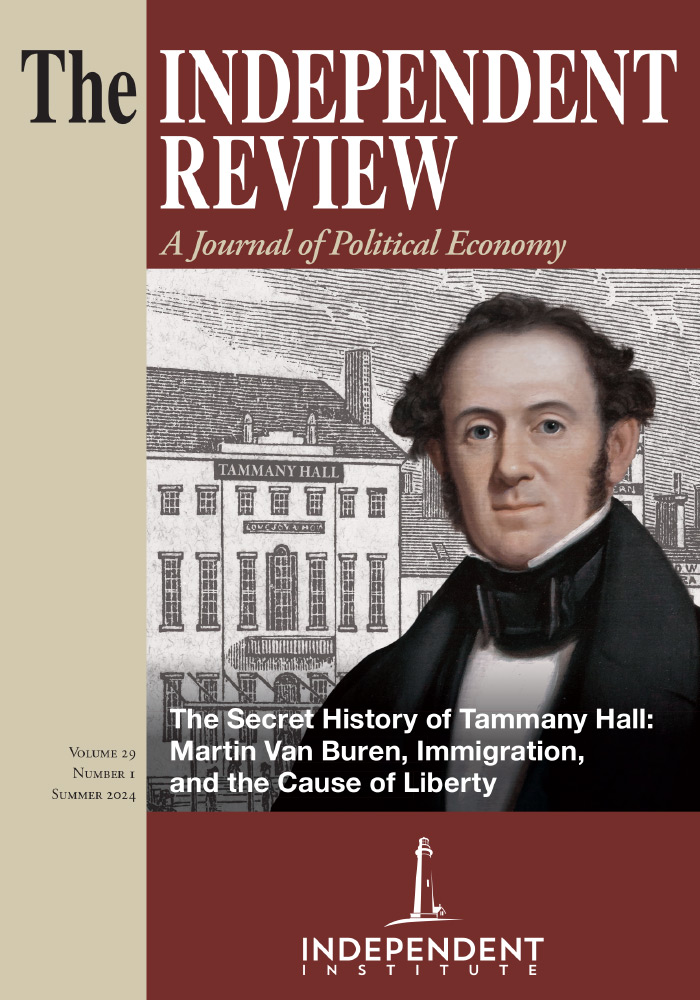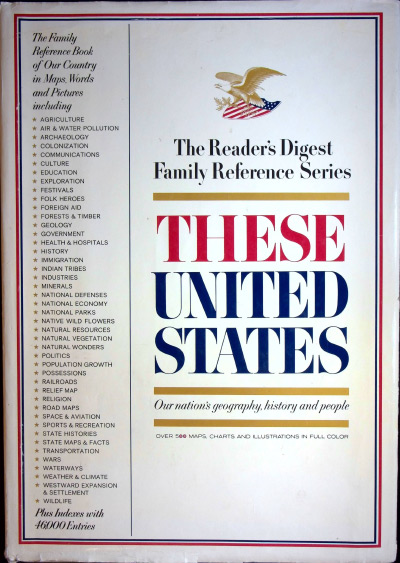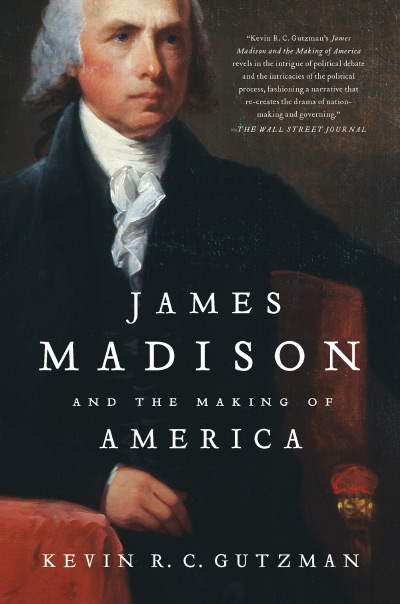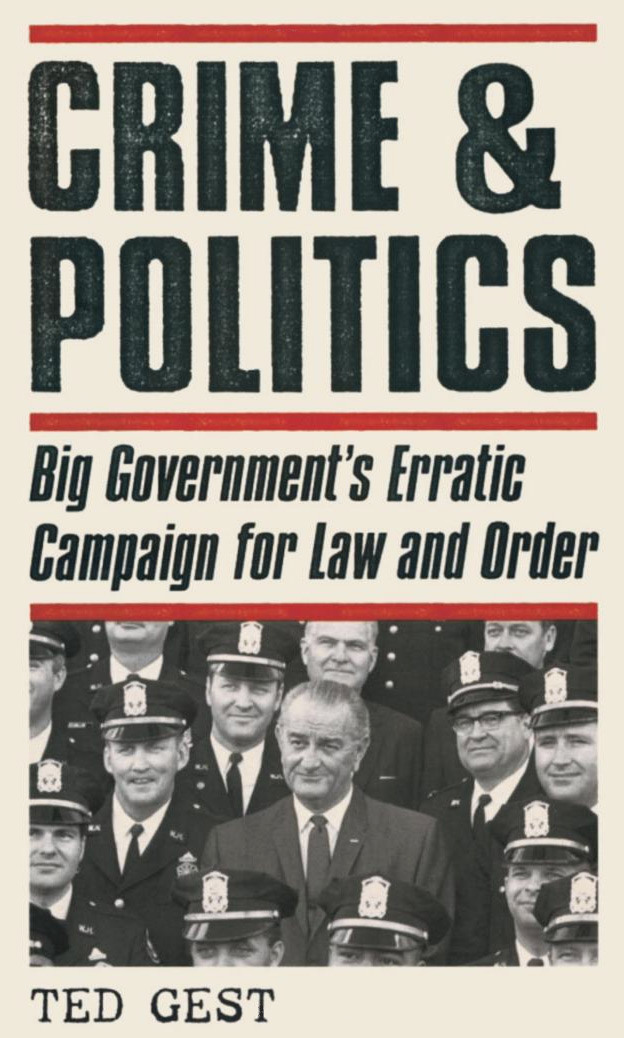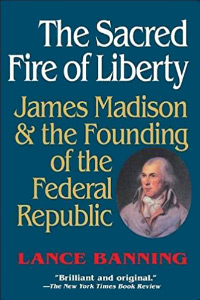When I was eight years old, I got the flu and missed a week of school. Fortunately, my mother had just ordered a copy of These United States. It was far more than an atlas. Accompanying each state map was an essay—usually about eight hundred to a thousand words—outlining the state’s history, geography, industry, and culture. Though it was not aimed at children, I fell in love with the book. I ate it up. By the end of the week, I had the states’ names memorized in alphabetical order. I had always loved maps—asking my parents to pass me the state highway map during road trips from at least age five. But the maps in These United States showed far more than cities, towns, lakes, and rivers. The volume included historical maps and maps showing the nation’s industry, agriculture, and minerals. The book may have set me on my course in life as an economist and an economic historian.
My copy of the book endured a lot of wear and tear, but it stayed with me into early adulthood before it disappeared. Perhaps I should have held onto it, like Charles Foster Kane’s Rosebud, but I didn’t. Last month, however, I found an almost pristine copy of the book at the annual used book sale in Winston-Salem for only $1, rekindling my love affair. (It seems to run for about $20 on Amazon and eBay, so this was quite a find.)
The maps in the book are simply remarkable. Too many atlases dizzy the reader with a jumble of information. The state maps in These United States truly have a “clean, uncluttered look” (p. 7). There are no roads (as highways appear later in the volume). The background is a lucid white, the cities and towns’ names are in black, the counties’ names are in red capital letters, the rivers, lakes, longitudes, and latitudes are in blue. Larger cities’ names are in bold and larger fonts—drawing your attention to places where more people live and showing uncluttered empty space where they don’t. My favorite feature—both as a child and an adult—is that towns with fewer than a thousand residents are represented by a small empty circle (rather than an insignificant dot); towns of 1,000 to 2,500 have a circle with a dot in the center; towns with 2,500 to 5,000 people are a circle with a line through the center; towns with 5,000 to 10,000 people are a circle with a plus in the middle; cities with 10,000 to 25,000 are a larger circle with a smaller circle in the middle; and the progression continues until cities above 100,000 are outlined and shaded in yellow, orange, and (for those exceptional cities with more than one million souls) red. This technique instantly conveys an immense amount of information and draws attention to the primary focus of the book—people. It sounds simple, but other atlases simply don’t do things so simply.
I detect two broad themes in the volume. The first was obvious even when I read through the book in elementary school—progress is the American way: “From our natural resources, our vigor, our imagination has sprung a way of life unmatched in the history of the world” (p. 7). This is the traditional definition that equates progress with prosperity and freedom. The second, easier to perceive by my older self, is that these United States are and should be united. The book was published in 1968 (although the copy I purchased is the slightly updated third reprinting from 1969). At that time, Americans enjoyed the highest standard of living in the world and had experienced robust economic growth since end of the Great Depression. The rising tide was lifting all boats. America was the leader of the free world and its strongest military power. It was about to put a man on the moon! The book aimed to document this and trace its roots. It said to our rivals, “Here, comrade, read this book, examine these maps, peruse these figures, and amend your ways.” But it was also a time of political turmoil. An unprecedented wave of riots had rocked our cities and anti-war protests were on the rise. The book sought to heal these divisions by showing what we had accomplished together.
The theme of progress is interwoven into the essays accompanying each state map. One notices it immediately on the first state map: Alabama. While some late-sixties readers might have seen Alabama as a hopelessly backward benighted place, These United States begins its Alabama essay by telling about the monument to the boll weevil in the town of Enterprise, the story of how the weevil pushed Alabamans to diversify their economy and the efforts of George Washington Carver to develop myriad consumer and industrial uses for the lowly peanut. The essay closes by noting that Alabama was sixth in the nation in hydroelectric power, thanks to major dams on the Tennessee River, and that it was the home of the George C. Marshall Space Flight Center in Huntsville, whose rockets “are now being perfected for landing the first man on the moon” (p. 11). The essay on Connecticut, my parents’ home state, is suffused with progress too, listing a litany of industrial breakthroughs that occurred within its borders: Eli Whitney’s gun factory with its interchangeable parts, Seth Thomas’s clocks, Linus Yale’s locks, Charles Goodyear’s vulcanized rubber and the production of nuclear submarines and helicopters. The essay on Maryland, where I grew up, exudes pride in progress: the skyline of Baltimore, the smelters, blast furnaces, and rolling mills of Sparrows Point, the barges, tugs, ocean freighters, yachts, and cabin cruisers on its bay. It also touts the “balance that enabled Marylanders to maintain a steady growth during the 300 years in which the region has advanced from an Indian tribal society to an English feudal domain and finally to a democratic state” (p. 34). The essay on Pennsylvania, where I went to graduate school, explains that “Pennsylvania’s progress” has been “registered with many ‘firsts’—the first paper mill in American, the first oil well, the first locomotive, the first insurance company, the first savings bank, ... the first magazine, the first medical school, the first successful daily newspaper, the first subscription library.... Today Pennsylvania is more prosperous and self-sufficient than many a foreign nation” (p. 57).
But it is Michigan that best exemplifies this progress. In 1913, “Henry Ford evolved the revolutionary technique of mass production on moving assembly lines, a process which reduced the price of automobiles and brought them within the means of millions of Americans. The history of the industry since that time has been one of continuous growth. [A bit of hyperbole, that ignores downturns like the Great Depression.] In World War II it was converted quickly and entirely to the production of war materiel and turned out an unending stream of airplanes, tanks, ships, artillery and munitions” (p. 36).
When I first read These United States, I lived in southern Michigan. Looking out my kitchen window about a quarter of a mile across a soybean field, I could see (and hear) the railroad that brought an endless stream of cars from Detroit to the rest of the country. The fruits of the nation’s productive might were before my eyes. But These United States drove the point home in exhilarating detail, because after the maps of the fifty states, maps of explorers’ routes, maps of tribal family locations, maps of battle campaigns, maps of territorial acquisitions, maps of each presidential election, maps of college locations, maps showing the distributions of religious adherents, geological maps, wildlife maps, climate maps, and several other kinds of maps (plus many beautiful scenic photographs), These United States came to dozens of economic maps! The first set of these detailed the locations of livestock, dairy, and crop production. Each dot on the soybean map represented 7,000 acres harvested and I could see that my county was on the edge of a vast soybean belt stretching through the Midwest, across and down the Mississippi River. But the map of industrial production, in a section titled “The Might of Industry,” said even more. My state was the darkest shade, indicating that it was one of the top six industrial producers (measured in billions of dollars) in the nation and, as shown in the next map, it was the heart of the transportation industry. The bold numbers in the map and the purplish dot gave it pride of place—over five billion dollars of autos produced, far outpacing every other state.
Pouring over these maps for countless hours, I had a good sense of where basically everything was produced in the country—including the locations of coal, uranium, iron, lead, copper, zinc, potash, sulfur, phosphate, silver, and gold mines plus natural gas and petroleum production (as well as pipelines). These deposits of minerals had “helped this country become a towering giant among present-day nations” (p. 155, although see Gavin Wright’s arguments that the U.S. has been especially advantaged by its institutions, which have encouraged the development of these natural resources, unlike so many other nations, in “The Origins of American Industrial Success, 1879–1940,” American Economic Review, 80, no. 4 (1990): 651–68). I learned that this was an immensely productive country. As I said before, the book jumpstarted my interest in and knowledge about the functioning of the American economy. (It also helped that my mother bought me the latest edition of the Reader’s Digest Almanac every Christmas.)
Amid this refrain of progress, however, there was a realism that things weren’t perfect. Improvements were needed, but we could achieve progress on every front if we put our collective minds to it. The essay on Michigan decries the damages from “disastrously” clearcutting its northern forest as “lumbermen swept across the land like locusts” (p. 36), but notes that lumber companies in the state now planted more trees each year than they cut, that forests once again blanketed about half the state, and that its lakes and streams had been restocked with fish. West Virginia’s coal deposits were a “mixed blessing,” but conservation measures were now beginning to reclaim lost land and waters. The need for broader progress is especially obvious in the map detailing pollution levels in major cities, with air quality ratings for total suspended particles, sulfur dioxide, and nitrogen dioxide—and I learned that cities I traveled through and near were among the dirtiest, including Baltimore, Wilmington, Philadelphia, and New York, even before I smelled them on those road trips.
Back to the second theme of These United States, the uniting of the states and their people. The authors had a delicate task and approached the job carefully. This can be seen, for example, in the essay on Mississippi, whose farmers and small-town residents were “distrustful of outsiders,” a state that “faces problems” but has a “bright future. Recent laws enacted by Congress have run head-on into established Mississippi customs and beliefs.... Yet industry spreads, providing new jobs, and urbanization is slowly modifying some time-worn ideas” (p. 39), the essay concludes with calculated understatement. Later tables show that Mississippi was dead last or near last in important measures of progress, such as average spending per pupil and doctors per capita—and that average income in Mississippi was the nation’s lowest at $1777 per person in 1966, far below the national average of $2963, even further below first-place Connecticut at $3690. However, the volume brings Mississippi back into the America fold by noting that “These averages clearly reflect the relative wealth of the United States in light of the figure of $100 per year, which is the average income per person in Latin America and Asia” (p. 158).
It strikes me that little and much has changed since then. The United States still enjoys the highest standard of living in the world (yes, a handful of small nations have higher average income levels, but if the individual states were ranked as nations twenty-seven of them would be in the top ten when I checked a couple of years ago; see also Mark Perry’s figures from a decade ago) and it is still the predominant military and political power. Economic growth rates have certainly slowed but our real incomes are more than twice what they were when the book was published. Yet our optimism is fading and political polarization is again pervasive. Perhaps we need to count our blessings and see each other as fellow citizens and members of the same team again. Maybe our successes are simply less obvious as they are no longer measured in tons of steel and ribbons of automobiles streaming out of factories, onto railroads, and onto our highways? Maybe we’re unsatisfied because the poor of the rest of the world have taken our cue and begun to catch up?
Finally, there are a few missteps in These United States—despite acknowledgements of input from a range of academics affiliated with universities like Chicago, Columbia, Harvard, Illinois, Maryland, NYU, Penn, Princeton, and Texas, in a wide range of fields including anthropology, economics, education, geography, geology, health, history, and sociology; as well as representatives from institutions like NASA, Resources for the Future, the Smithsonian, and the U.S. Weather Bureau. The missteps, like ours today, are likely a creation of the time and place.
First, many of the numerical economic trends detailed in These United States are virtually useless, as they are given in nominal terms. For example, a graph on national income shows an unbroken rise from 1935 to 1967, surging from $50 billion to $650 billion, but doesn’t adjust for inflation. Annually, the inflation was fairly mild, averaging 2.8 percent per year, but prices rose by almost 150 percent during this period. Inflation rates went through the roof shortly after the book was published and few were naïve enough to fail to adjust for inflation after this. Second, the experts consulted for These United States believed that “by the year 2000, nuclear energy may be used to generate nearly 50 percent of the electricity” produced in the country (p. 155). Oops. Had we maintained greater optimism, we might have stuck with safe and reliable nuclear power. Finally, the authors felt compelled to warn that “we appear to be on the threshold of a population boom that could make the last one look like a small firecracker. . . . Many experts predict that the population of the United States will reach over 250 million by 1985. If this happens, the problems of housing, school, transportation, crime, pollution of water and air, and other population-related changes will be incalculable” (p. 101). The population had just surpassed 200 million when the book was published. We didn’t reach 250 million in 1985, only 238 million, but the worries that we couldn’t build more homes, schools, and roads—as we had done in the past—while also solving other problems seem timid and misguided. The section closes with a projection that “if the present birthrate continues . . . the number of people in the United States by 2065 [will reach] one billion!” (p. 101). This projection was incorrect at the time, as the total fertility rate in the U.S. had fallen to 2.45 children by the time the book was published—well below its late 1950s peak around 3.6. I think this projection was meant to shock readers. Today it seems amusing, as total fertility rates crash around the world and we start planning for shrinking populations.
Despite these quibbles, These United States was and is a remarkable and remarkably useful book. While elites often derided the Reader’s Digest operation as low brow, their snobbery had a high opportunity cost. It was the Reader’s Digest, after all, that excerpted and popularized Friedrich Hayek’s Road to Serfdom. Likewise, if snobs were to disdain These United States it would be their loss and the gain of middle-class families like mine.
Thanks, Mom!
| Other Independent Review articles by Robert M. Whaples | ||
| Winter 2024/25 | Character in the American Experience: An Unruly People | |
| Winter 2024/25 | Slow Burn: The Hidden Costs of a Warming World | |
| Winter 2024/25 | Richer and More Equal: A New History of Wealth in the West | |
| [View All (102)] | ||

